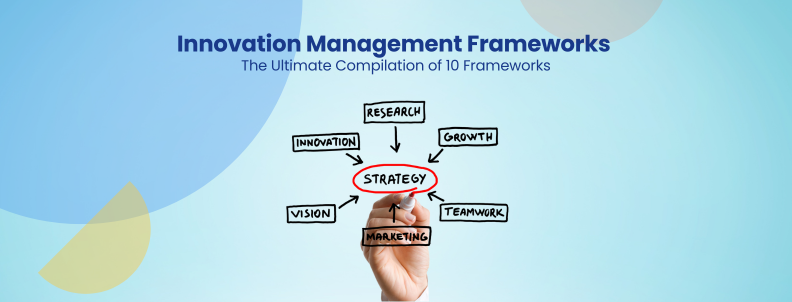Introduction
Companies that actively promote a culture of innovation by investing in talent and digital capabilities are often 3 times more likely to outperform their less – innovative peers.
– McKinsey’s study on innovative growers
Effective innovation management frameworks are crucial for optimizing resource utilization and leveraging external knowledge to drive innovation. These frameworks help organize the seamless integration of different perspectives, ideas, cultures, and technologies.
Innovation management frameworks provide actionable insights to business heads and the R&D teams to help them make calculated decisions by:
- Evaluating internal and external opportunities.
- Identifying and understanding the complexities of both internal and external innovation.
- Offering solutions to mitigate risks.
The article discusses ten innovation management frameworks for R&D teams that can streamline their innovation journey.
10 Innovation Management Frameworks for R&D Teams
Open Innovation
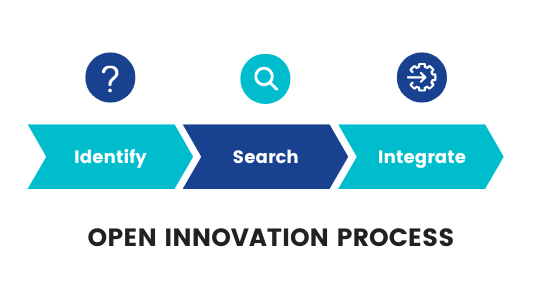
Innovation is the driving force behind a business’s growth. But in today’s fast-paced world, creating all that innovation in-house is tough. That’s why the business world has discovered a smart new approach: open innovation.
Phillips has implemented open innovation at its High Tech Campus in Eindhoven, which hosts over 12,500 researchers, developers, and business professionals. Additionally, its new innovation center in Bengaluru, with a workforce of over 5,000, is focused on innovative healthcare solutions. By 2030, it aims to improve the lives of 2.5 billion people every year through technical innovation strategies.
The Framework includes –
- Utilizing internal and external ideas in open innovation to leverage the best of both worlds.
- Collaborating with external partners to exchange knowledge and technologies, sharing rewards and risks.
While open innovation is a powerful framework in its own right, integrating other innovation models with open innovation can yield exceptional results. Frameworks such as Design Thinking, Lean Startup, and Stage-Gate can complement open innovation by providing structured methodologies to harness external ideas and resources effectively.
Design Thinking
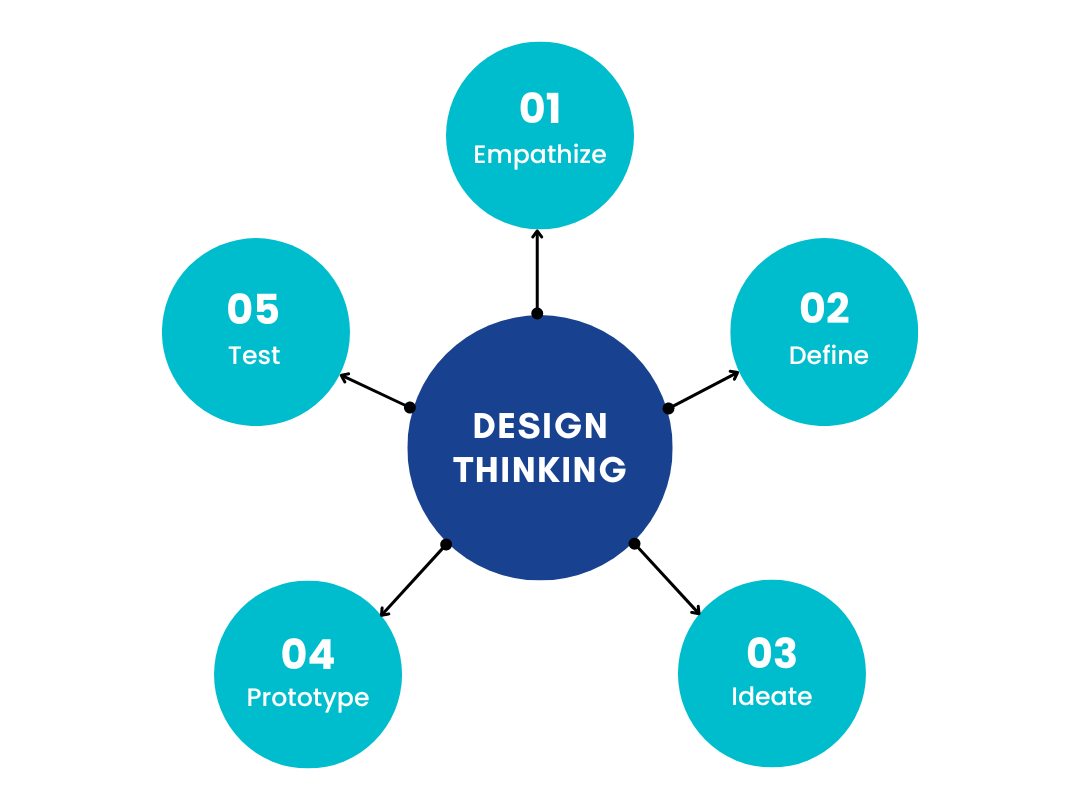
The design thinking framework emphasizes addressing the needs of people by focusing on a human-centered approach. This user-centric approach can enhance the problem-solving process in open innovation, ensuring that the solutions developed are deeply aligned with user needs.
IDEO, a global design and innovation company, leveraged the design thinking framework for their Joyful Living project in Singapore to enhance the aging experience by:
- Addressing challenges faced by the elderly by conducting detailed research.
- Understanding the physical, emotional, and social aspects of aging,
- Designing healthcare cost discussion guides that were more patient-centric.
- Developing tools to help patients understand healthcare costs.
This framework includes –
- Understanding user needs and behavior through empathy.
- Sequential stages: Empathizing, defining, ideating, prototyping, and testing.
- Utilizing iterative prototyping for concept creation and testing.
- Collecting user feedback in every iteration for ongoing enhancement.
Agile Methodology
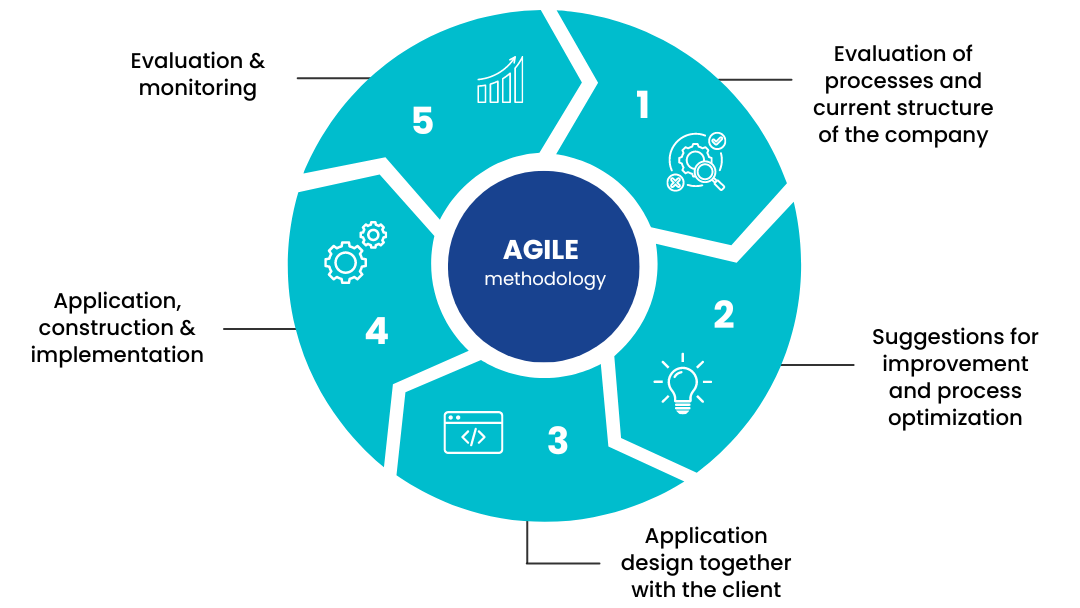
Agile is a project management philosophy in software development that breaks work into short cycles called ‘sprints,’ typically 1-4 weeks long. In each sprint, the team plans, builds, tests, and reviews a working piece of software. This iterative approach lets you quickly adapt to changing requirements, get frequent user feedback, and deliver usable software faster than traditional methods like Waterfall.
The Agile Method’s iterative and flexible approach allows organizations to rapidly adapt to new external ideas and technologies, fostering a collaborative environment that aligns well with the principles of open innovation.
The well-known music streaming platform, Spotify, adopts this approach. They organize multiple teams, known as squads, each consisting of 6–12 members. Every squad focuses on developing and deploying a single feature. To ensure guidance, each squad is supported by a product owner and an agile coach.
The Framework includes –
- Breaking tasks into iterations, known as sprints, of consistent duration in Agile methodology, ensuring continuous development and testing.
- Prioritizing flexibility, adaptability, and responsiveness to market changes in product development.
- Incorporating feedback from clients/customers throughout the sprint cycles in Agile methodology.
Lean Startup
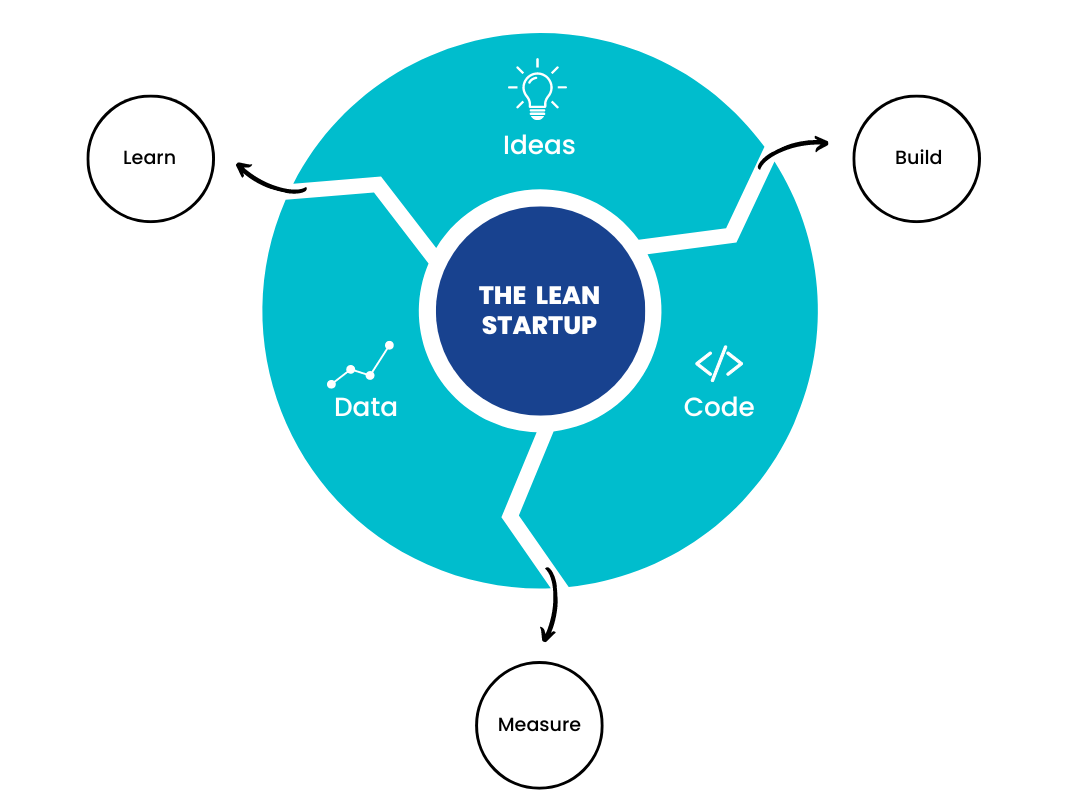
In this management framework, the focus tends to be on building and testing minimal viable products (MVPs), which are product versions with a minimum set of features. Lean Startup principles can help in rapidly testing and iterating on the external ideas in open innovation, reducing risk and accelerating time-to-market.
Dropbox employs this strategy for syncing files across various devices. They began with an MVP, focusing on ensuring seamless file-syncing capabilities. To validate customer interest, they crafted a straightforward video showcasing their service. This enabled them to swiftly launch their product and refine it based on valuable customer feedback.
The Framework includes –
- Showcasing MVPs to clients for collecting early feedback.
- Conducting iterative rapid experimentation to minimize waste, reduce risk, and refine the business model.
Stage-Gate Process
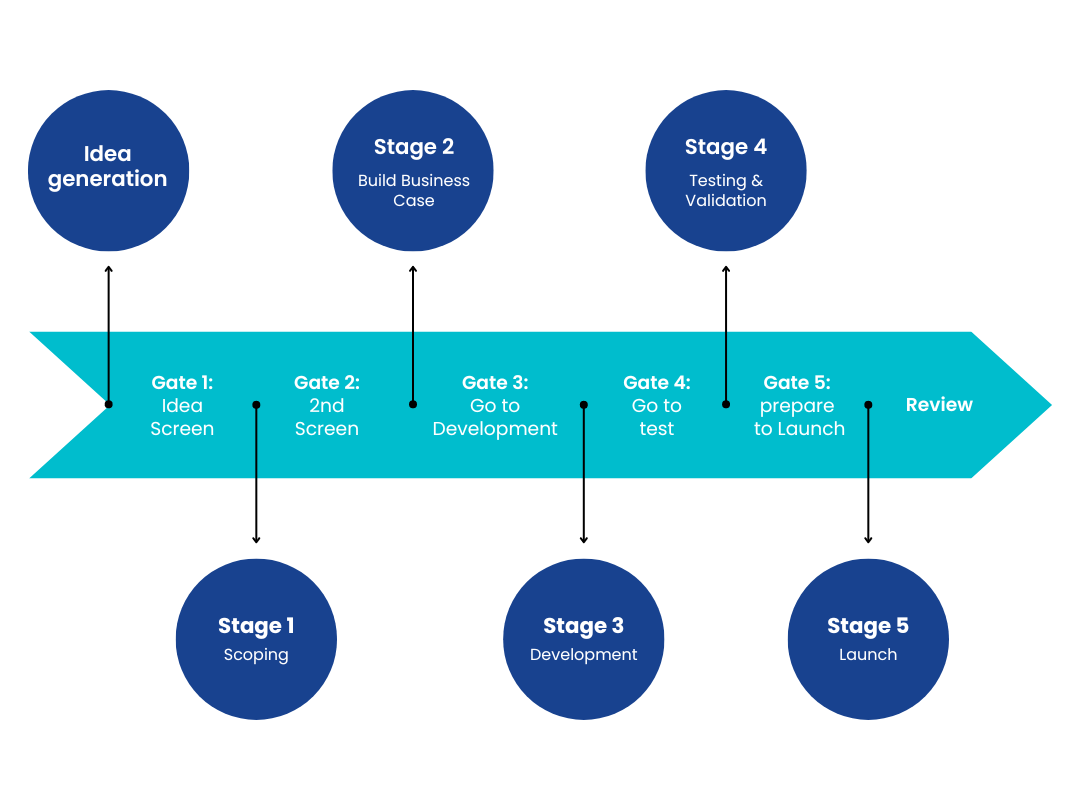
This management methodology provides a structured way to guide ideas from concept to market, minimizing surprises and maximizing success rates.
Procter & Gamble, commonly referred to as P&G, adopted the stage-gate approach within their product development pipeline. They established distinct phases, including idea generation, feasibility assessment, development, testing, and launch. Each phase involved multiple evaluations conducted during gate reviews to ensure project progress and viability.
The Framework includes –
- Multiple stages and checkpoints where the product undergoes evaluation to ascertain whether to proceed with the proposed changes. These predetermined stages serve as a structured roadmap, steering projects from conception to market introduction.
Blue Ocean Strategy
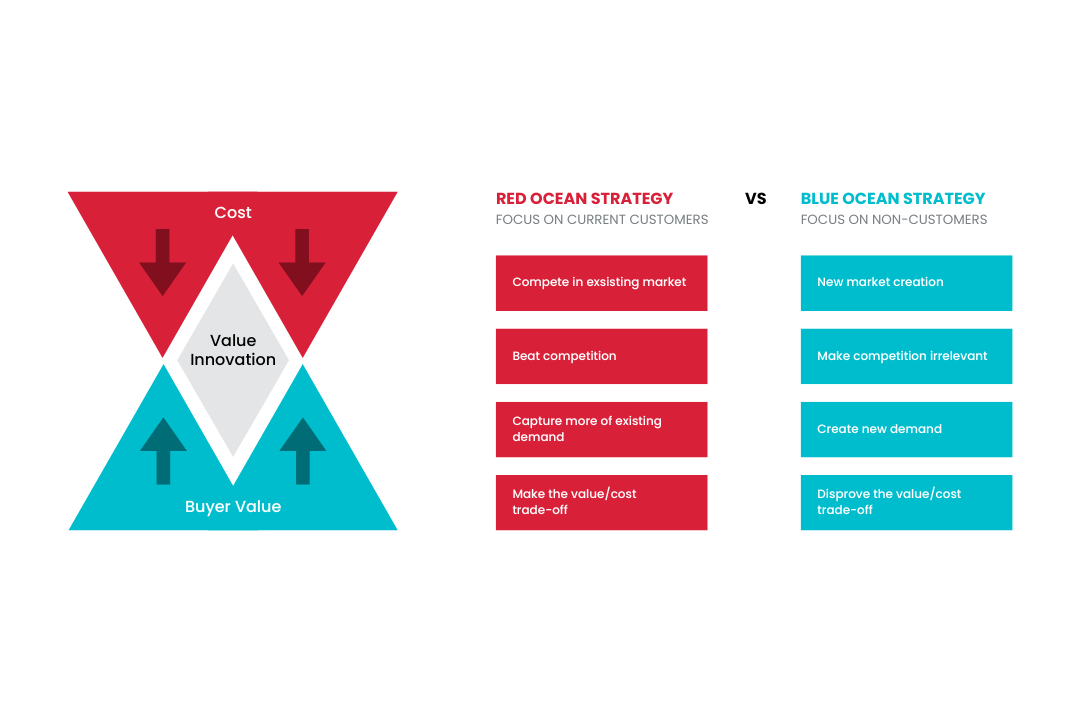
This strategy aims to create new demands and market spaces by differentiating from existing competition. With its focus on creating uncontested market space, Blue Ocean strategy can drive organizations to seek out and leverage external insights that help identify and develop innovative products and services that meet unfulfilled market needs.
Cirque du Soleil moved away from the traditional circus format and adopted the blue ocean strategy. Their innovative approach fused elements of theater and circus, capturing the attention of adult and corporate audiences. As a result, while the conventional circus sector experienced a decline in revenue due to dwindling audience interest, Cirque du Soleil’s productions captivated over 150 million spectators across 300 cities.
The Framework includes –
- Encouraging companies to redirect their attention away from existing market competition, commonly called red oceans.
- Highlighting the importance of venturing into blue oceans and representing untapped markets with non-existent competition by introducing innovative products.
- Encompassing a strategic vision that extends beyond conventional industry boundaries, aimed at crafting new and unexplored market spaces.
Jobs-to-be-Done Theory (JTBD)
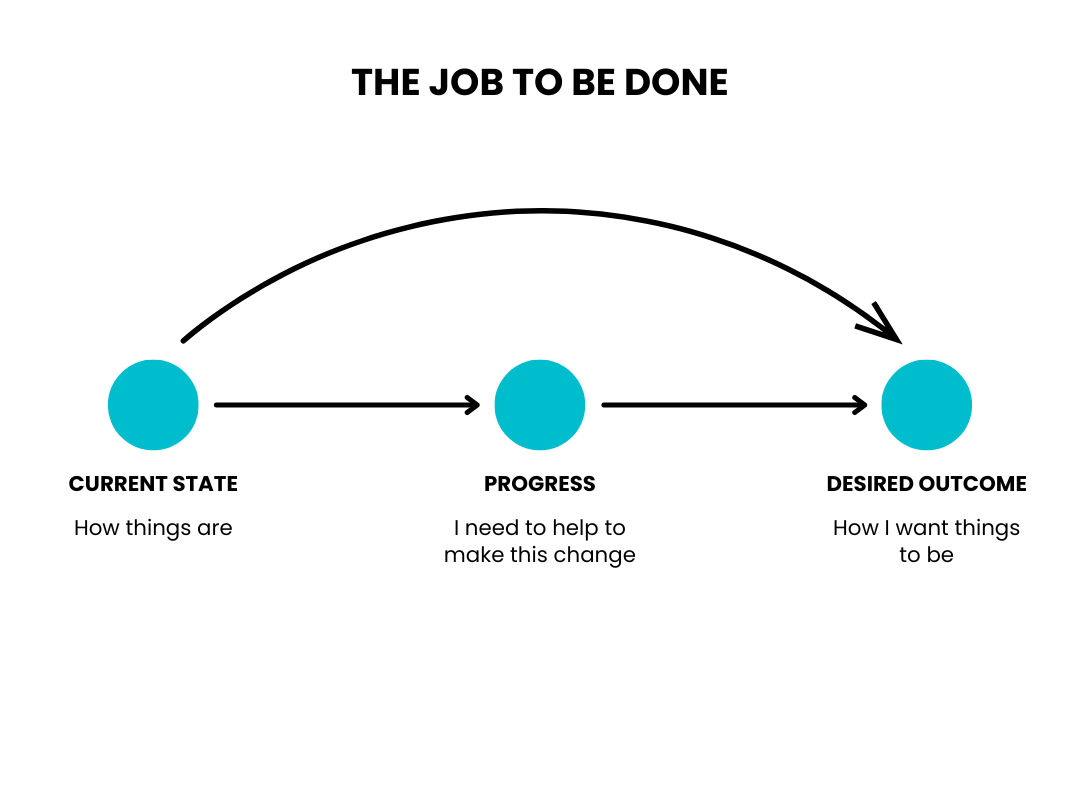
This framework relies on understanding and fulfilling customer needs to drive product innovation. This can be enhanced by open innovation’s access to diverse perspectives and solutions, ensuring that innovations are truly aligned with customer needs.
The Milkshake Marketing story, popularized by Clayton Christensen, shows how product innovation can stem from understanding customer needs using the JTBD theory. When a fast food chain noticed customers buying more milkshakes in the mornings for a quick and satisfying breakfast during their commute, they made their milkshakes thicker for more filling. They also added new flavors and changed the packaging. This simple adjustment helped increase revenue by better satisfying their customers’ needs.
The Framework includes –
- Shifting the perspective towards customers purchasing products or services to fulfill specific tasks.
- Prioritizing the development of solutions tailored to address customer needs, moving beyond mere product features.
Disruptive Innovation
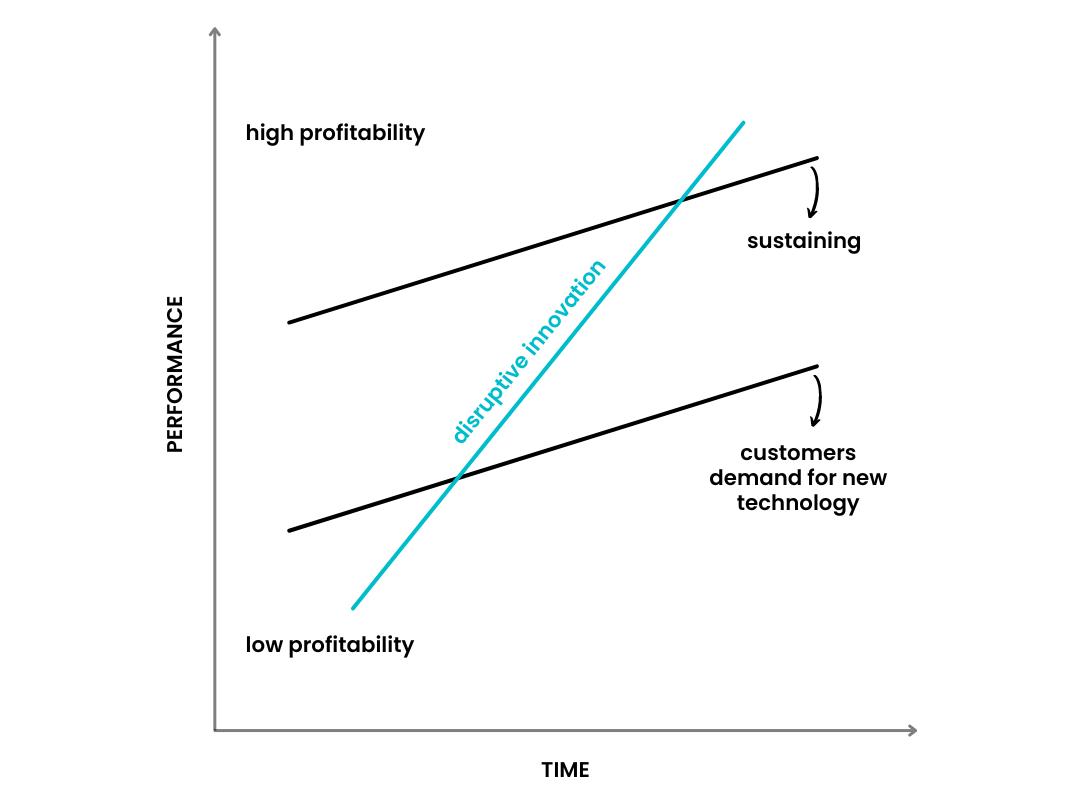
The disruptive innovation methodology was also introduced by Clayton Christensen. This theory explains how new technologies and new business models lead. The framework focuses on developing simpler, more affordable products to cater to overlooked markets. Companies using this framework can benefit from the breadth of ideas available through open innovation, allowing for breakthrough products that can redefine industries.
Netflix used disruptive innovation by transitioning its services into streaming platforms. Originally operating as a DVD-by-mail rental company in the early 2000s, Netflix recognized the potential of streaming technology. This led to a gradual shift towards online streaming, catering to a wider audience. Subscribers gained the ability to instantly and conveniently watch their favorite shows over the internet.
The Framework includes –
- Targeting the low-end market with straightforward and cost-effective solutions.
- Gradually disrupting the primary market and reshaping the industry landscape.
Stage-Gate® for Open Innovation
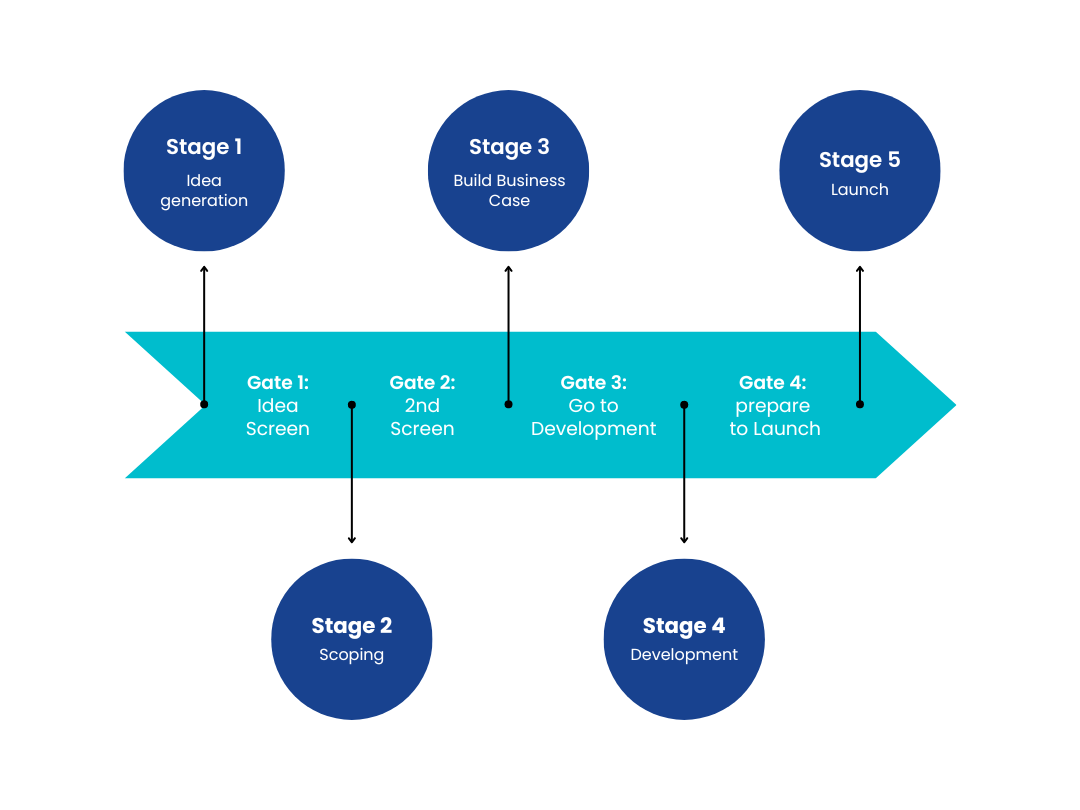
This management framework combines the stage-gate process principles with open innovation practices. The Stage-Gate process can introduce a disciplined approach to managing the influx of external ideas and ensure they pass through rigorous evaluation phases, thereby improving the quality and feasibility of the open innovation solutions implemented.
The StartUs Insights Discovery platform is widely recognized for employing this methodology, serving as a valuable tool for companies seeking startups and technologies for collaborative ventures. Its stages encompass ideation, scoping, business case development, product development, and product launch. This platform allows companies to effectively uncover innovative solutions and streamline their scouting and decision-making processes.
The Framework includes –
- Implementing stage-gate management for innovation projects involving external partners.
- Harnessing the strengths of both internal resources and external collaborators.
The Four C Framework
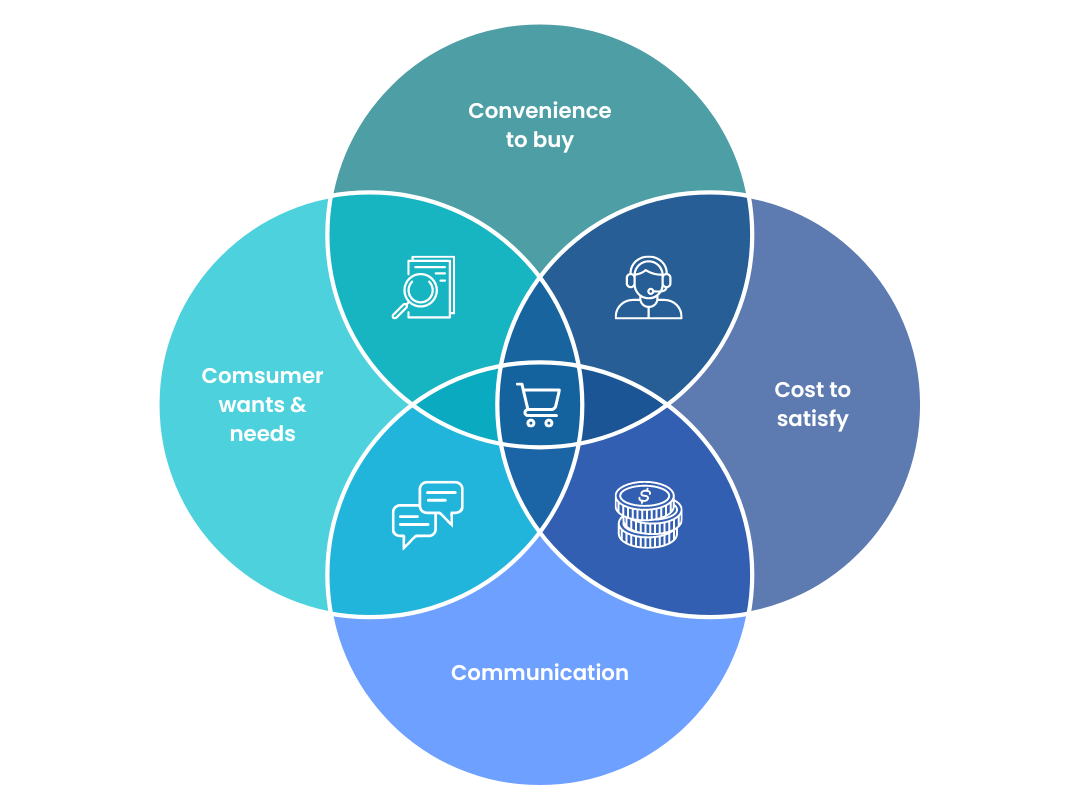
The four C framework emphasizes the four stages of the open innovation process: collaborate, capture, co-create, and commercialize. It is a comprehensive approach to integrating external ideas. Collaboration ensures active engagement with external partners, capturing insights and resources that are vital for innovation. Co-creation involves working closely with these partners to develop innovative solutions, while commercialization focuses on effectively bringing these innovations to market. This framework ensures that the influx of ideas from open innovation is thoroughly evaluated and strategically implemented, enhancing the overall innovation process.
To facilitate this process, organizations often utilize idea management platforms like Inspire IP, which provide a centralized space for brainstorming, capturing, developing, implementing, tracking, and protecting ideas. Such tools enable continuous problem-solving by involving all stakeholders in the innovation journey.
The Framework includes –
- Collaboration among internal and external stakeholders.
- Capturing important data and insights.
- Co-creating innovative solutions.
- Commercializing the outcome.
Key Takeaway
These innovation management frameworks provide different and remarkable strategies for R&D teams to thrive. Industries should evaluate their unique business scenario and pursue customer-centric and empathy-driven approaches, pivoting on external collaboration, faster iterations, and other innovative approaches.
The strategies proposed by these frameworks can help organizations achieve effective innovation. They can also definitively guide the research and development team when carrying out external/open innovation tasks. By leveraging these innovation management frameworks, organizations can maximize the potential of open innovation and drive transformative growth. Each model brings unique strengths that, when combined with open innovation, can create a robust, dynamic, and effective innovation ecosystem.
Adopt these frameworks within your organization and remain a step ahead of your competitors.
Also read – Leveraging Outside Innovation for Your Business: A Guide to Open Innovation

